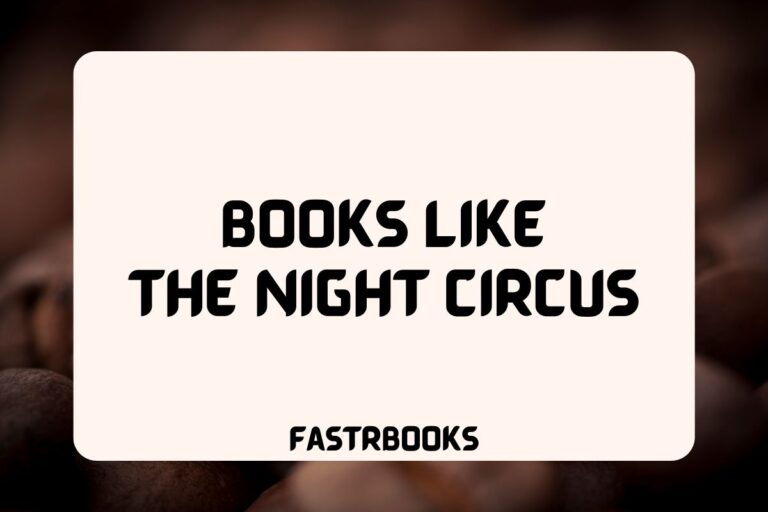18 Books like House of Leaves
If you’re captivated by the eerie, unconventional storytelling of Mark Z. Danielewski’s “House of Leaves,” you’ll undoubtedly be drawn to similar works that push the boundaries of narrative structure and delve into the realms of psychological horror and experimental fiction.
In this blog post, we will explore a selection of books that share thematic elements, narrative complexity, and the ability to leave readers questioning reality long after they’ve turned the final page.
From twisty plots to mind-bending narratives, these books promise to satisfy your appetite for the strange and unsettling.
Let’s go.
Books like House of Leaves
1. The Raw Shark Texts by Steven Hall
This novel blends elements of suspense, romance, and science fiction to create a unique narrative experience.
It follows the story of Eric Sanderson, who wakes up with no memory and discovers he is being pursued by a conceptual shark that feeds on human memories and consciousness. The book is noted for its innovative structure, including typographical experiments that mirror the plot’s themes.
Major Similarities: Like House of Leaves, The Raw Shark Texts plays with unconventional narrative structures and typographical playfulness to immerse the reader in its story. Both books challenge traditional storytelling methods and involve a metaphysical threat that blurs the lines between reality and fiction.
2. S. by J.J. Abrams and Doug Dorst
This novel is a collaboration between filmmaker J.J. Abrams and writer Doug Dorst, presented as a story within a story. It comes packaged with a book titled “Ship of Theseus” by a fictional author, around which the margins are filled with notes by two readers who communicate through the book itself.
The physical book contains inserts like postcards and newspaper clippings, adding layers to its mystery.
Major Similarities: Both S. and House of Leaves engage readers with their physical form, requiring interaction with the text and its margins, making the act of reading part of the narrative experience. They share a multi-layered storytelling approach, combining different narratives to form a cohesive whole.
3. Only Revolutions by Mark Z. Danielewski
From the author of House of Leaves, this novel tells the story of two teenagers, Hailey and Sam, who are on a road trip across America.
The book is notable for its unique structure, with the narrative split between the two characters, each having their own half of the book, which can be read by flipping the book around. The layout and typography are experimental, with words spiraling around pages and varying fonts and colors.
Major Similarities: Like House of Leaves, Only Revolutions features Danielewski’s hallmark experimental typography and unconventional narrative structure. Both books challenge readers to engage with the physical layout of the text, creating a distinctive reading experience that requires active participation.
4. Night Film by Marisha Pessl
This thriller novel follows investigative journalist Scott McGrath as he delves into the mysterious death of Ashley Cordova, daughter of the reclusive cult-horror film director Stanislas Cordova.
The narrative is enriched with multimedia elements such as website screenshots, news articles, and other digital ephemera, blurring the line between fiction and reality.
Major Similarities: Night Film and House of Leaves both incorporate multimedia elements to deepen the mystery and engage the reader, creating a cinematic reading experience. They share a fascination with the dark and unexplained, pulling readers into a labyrinthine investigation that challenges perceptions of reality.
5. Infinite Jest by David Foster Wallace
This sprawling novel is set in an alternate North America and weaves together various narratives, including a tennis academy, a rehab facility, and a geopolitical crisis involving a film so entertaining that it renders viewers incapacitated.
Wallace’s work is known for its complex structure, extensive footnotes, and deep exploration of themes like addiction, entertainment, and the search for meaning.
Major Similarities: Both Infinite Jest and House of Leaves are monumental in scope and ambition, challenging conventional narrative structures with their complexity and depth. They share a penchant for footnotes and asides that enrich the main text, demanding a high level of engagement from the reader.
6. The Fifty Year Sword by Mark Z. Danielewski
Another work by Danielewski, this novella is a ghost story told at a Halloween party in East Texas. The narrative is visually distinctive, with colored quotation marks to distinguish the speakers and elaborate stitchings that serve as illustrations.
Its experimental layout and storytelling technique create a unique reading experience.
Major Similarities: Similar to House of Leaves, The Fifty Year Sword utilizes visual and typographical experimentation to enhance its storytelling. Both books by Danielewski offer a distinct narrative experience that merges the visual with the textual, creating stories that are as much about the medium as they are about the narrative itself.
7. House of Sand and Fog by Andre Dubus III
This novel tells the tragic story of a dispute over house ownership between a recovering alcoholic and an Iranian immigrant family.
The intense narrative dives deep into themes of dreams, justice, and the devastating impact of small misunderstandings. The storytelling is straightforward but rich with emotional depth and moral complexity.
Major Similarities: While House of Sand and Fog does not share the typographical experimentation of House of Leaves, it mirrors the intense, claustrophobic atmosphere and the deep exploration of its characters’ psychologies. Both books engage with themes of home and the unsettling nature of its loss or transformation.
8. If on a winter’s night a traveler by Italo Calvino
This postmodern masterpiece is a novel about reading and writing novels, consisting of the first chapters of ten different books, all interrupted at a moment of suspense.
Between these chapters, the narrative follows a Reader and a Readeress as they try to find the rest of the books, leading them through various literary landscapes and theories.
Major Similarities: Like House of Leaves, Calvino’s novel plays with the concept of narrative and reader expectation, creating a metafictional experience that questions the nature of storytelling and the role of the reader. Both books are celebrated for their innovative structures and the way they challenge readers to think about the act of reading itself.
9. We Have Always Lived in the Castle by Shirley Jackson
This novel focuses on the Blackwood sisters, Mary Katherine and Constance, who live in isolation after the rest of their family was poisoned, with Constance acquitted of the murder.
The narrative explores themes of isolation, otherness, and the macabre, set against the backdrop of the small village’s suspicion and the sisters’ peculiar life.
Major Similarities: While not engaging in typographical innovation, We Have Always Lived in the Castle shares with House of Leaves a deep dive into psychological horror and the exploration of themes such as isolation and the unreliability of perception. Both novels craft an atmosphere thick with suspense and ambiguity.
10. Pattern Recognition by William Gibson
Set in the post-9/11 world, this novel follows Cayce Pollard, a marketing consultant with an allergy to brand logos, as she is hired to uncover the origins of mysterious video clips appearing on the internet.
The narrative explores themes of globalization, technology, and the search for authenticity in a mediated world.
Major Similarities: Pattern Recognition and House of Leaves both delve into the mysteries of modern existence, with a particular focus on the impact of technology and media. They share a concern with the ways in which narratives are constructed and the search for truth within layers of fiction and reality.
11. Annihilation by Jeff VanderMeer
This novel, the first in the Southern Reach Trilogy, follows a team of four women as they explore Area X, a mysterious, remote, and uninhabited area cut off from the rest of civilization.
The story is told through the journal of the biologist on the team, revealing the bizarre changes in the landscape and its creatures, as well as the psychological strains on the team members. VanderMeer’s writing is known for its atmospheric and unsettling qualities, blending science fiction with horror.
Major Similarities: Like House of Leaves, Annihilation offers a deep exploration of the unknown and the psychological effects it has on its characters. Both books create an immersive, eerie atmosphere and challenge the reader’s perceptions of reality through their mysterious, labyrinthine settings.
12. The Third Policeman by Flann O’Brien
This surreal, comic novel is set in a bizarre and nonsensical world, following the narrator’s journey after he commits murder to retrieve a box of money.
The story delves into absurdity and philosophy, particularly in discussions with the titular policemen, who are obsessed with the theories of a fictional philosopher. The novel’s structure and narrative style are unconventional, with a circular plot and an ending that forces the reader to reconsider everything that has come before.
Major Similarities: The Third Policeman and House of Leaves both play with narrative expectations and reality, employing a unique blend of humor, horror, and philosophical inquiry. They share a fascination with the bizarre and an ability to disorient and re-engage the reader in unexpected ways.
13. The City & The City by China Miéville
This novel is a blend of detective fiction and fantasy, set in two cities that occupy the same physical space but are perceived as entirely separate by their inhabitants, who are conditioned from birth to “unsee” the other city.
The story follows Inspector Tyador Borlú of the Extreme Crime Squad in the city of Besźel as he investigates a murder that may involve Breach, the mysterious force policing the boundary between the cities.
Major Similarities: Both The City & The City and House of Leaves explore themes of space and perception, challenging the reader to reconsider the nature of reality and the unseen forces that shape our understanding of the world. The novels weave complex narratives that require the reader to navigate through layers of mystery and political intrigue.
14. The Luminaries by Eleanor Catton
Set during the New Zealand gold rush in the 1860s, this novel is structured according to astrological principles, with each of the twelve main characters representing a zodiac sign and the planets.
The plot revolves around a series of unexplained events, including a wealthy man’s disappearance, a prostitute’s attempted suicide, and a fortune found in a hermit’s cabin. Catton’s narrative is complex, weaving together multiple storylines and time periods.
Major Similarities: Like House of Leaves, The Luminaries employs a unique structural concept to enhance its narrative, requiring readers to engage deeply with its form and content. Both novels are ambitious in scope, exploring human connections and the influence of unseen forces.
15. Atmospheric Disturbances by Rivka Galchen
This novel tells the story of a psychiatrist who becomes convinced that his wife has been replaced by an imposter, launching him on a global quest to find the “real” her.
The narrative blends elements of psychological thriller and existential inquiry, exploring themes of identity, perception, and the nature of reality.
Major Similarities: Atmospheric Disturbances shares with House of Leaves a fascination with the instability of reality and the deep psychological impact of this instability on its characters. Both novels are marked by their innovative narrative approaches and the blending of the surreal with the deeply personal.
16. 1Q84 by Haruki Murakami
This novel is set in Tokyo in 1984 and follows two characters, Aomame and Tengo, as they navigate a world that has subtly shifted from their own, dubbed “1Q84” by Aomame.
The book explores themes of love, history, and the impact of fiction on reality, blending the mundane with the fantastic in Murakami’s signature style.
Major Similarities: Like House of Leaves, 1Q84 immerses readers in a layered, complex world where reality is malleable and perceptions are constantly challenged. Both novels are expansive in scope, exploring the intersections between narrative, reality, and identity.
17. Gone Girl by Gillian Flynn
This thriller novel delves into the complexities of marriage, media influence, and the construction of identity. When Amy Dunne goes missing, her husband Nick becomes the prime suspect, uncovering layers of deceit and manipulation.
The novel’s structure, alternating between Nick’s perspective and Amy’s diary entries, reveals the unsettling dynamics of their relationship.
Major Similarities: While Gone Girl does not feature the typographical experimentation of House of Leaves, it shares a deep engagement with the themes of perception, reality, and the narratives we construct about ourselves and others. Both novels are compelling for their psychological depth and the way they unravel their mysteries.
18. The Night Circus by Erin Morgenstern
This fantasy novel revolves around a magical competition between two young illusionists, Celia and Marco, who are bound to a duel within the confines of a mysterious circus that only appears at night.
The story is rich in magical realism and explores themes of love, fate, and the power of imagination. Morgenstern’s writing is atmospheric and evocative, creating a vivid world that captivates the reader.
Major Similarities: The Night Circus and House of Leaves both create immersive worlds that draw the reader into their unique settings and narrative depths. While differing in genre, both books share a love for the mysterious and the unexplained, crafting stories that linger in the imagination long after the final page is turned.






